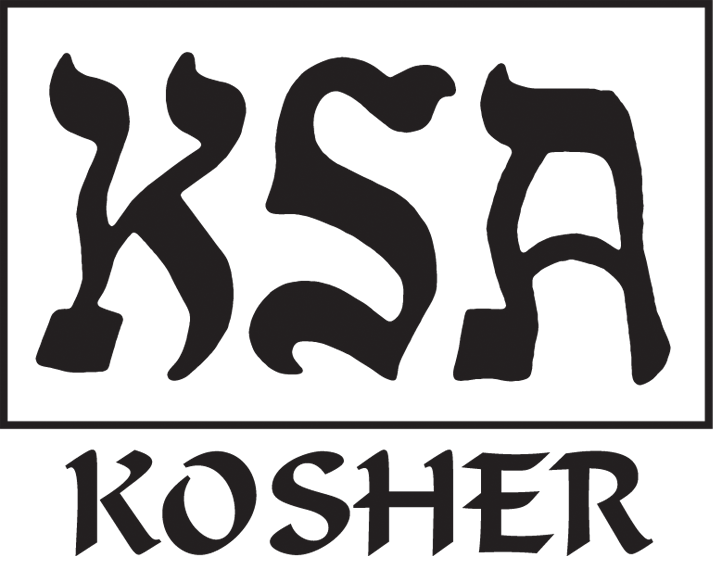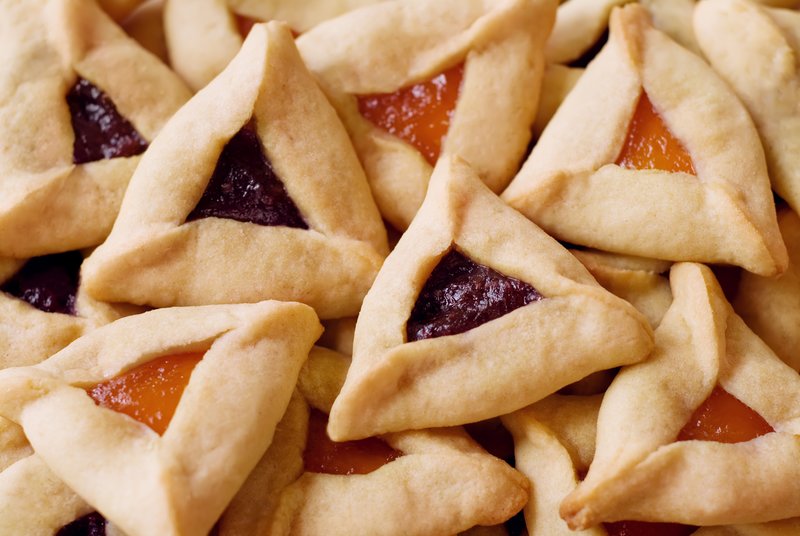Many Jewish people have been getting ready for Purim — by baking hamantaschen cookies, triangular treats made of dough with poppy seeds or fruit jam in the middle.
Asked what the dessert signifies, many celebrants would quickly answer that they’re in the shape of the triangular hat supposedly worn by Haman, the villain of the Purim story in the Book of Esther. But there’s more history than that to the cookie — and clues can be found in its name.
Early versions of the cookies were more commonly known as oznei Haman, meaning “Haman’s ears.” The late Jewish food historian Gil Marks’ Encyclopedia of Jewish Food traces that phrase — but not the cookie — to the Roman scholar and poet Immanuel ben Solomon (c.1261-1328) who, thanks to “a misinterpretation arising from the medieval Italian custom of cutting off a criminal’s ear before execution,” argued that Haman’s ears had been cut off after he was hanged, at the end of the Purim story.
Marks traces the first record of oznei Haman as something to eat back to a 1550 satirical Hebrew play that was produced for a Purim carnival in Mantua, Italy, and “is the oldest extant Jewish play,” drawing from both religious stories and Italian dramatic traditions. The script contains a play on words in which one character thinks that the Biblical story of the Israelites eating manna in the dessert is saying that the Israelites ate Haman; another character responds with an interpretation that it must mean that Jews are commanded to eat oznei Haman.
Rabbi Cheryl Peretz, a dean at the Ziegler School of Rabbinic Studies of American Jewish University, says by connecting Purim treats to manna, the play, while satirical, resonated with audiences because it touched on an issue that still comes up today of “how you renew customs and traditions in meaningful ways in a contemporary world.”
Sometime in the 18th or 19th century in Germany and Eastern Europe, a triangular pastry pocket filled with poppy seeds often called Mohntaschen — mohn meaning meaning poppy seed, and tasch meaning pocket — came onto the scene. The word became a pun around Purim: oznei Haman plus mohntaschen created hamantaschen. The name caught on thanks in part to Eliezer Ben‑Yehuda, often called the “father of modern Hebrew,” for his efforts to promote the ability to speak the language in the modern world, according to Aaron Panken, President of Hebrew Union College-Jewish Institute of Religion
Whether the story behind the cookies is based on true historical events depends on whom you ask. Jewish-food guru Joan Nathan, whose next book is the upcoming King Solomon’s Table: A Culinary Exploration of Jewish Cooking From Around the World, notes that the Purim story is based on “history in Iran, then Mesopotamia, in about the 8th century B.C.” and that “Ahasuerus the king might have been based on Xerxes.” Jonathan Brumberg-Kraus, a professor of religion at Wheaton College in Norton, Mass., says that that although the actual story is believed by critical scholars to be fictional, “the setting in the Persian court is historically realistic.”
The idea of naming a pastry after someone “wicked” is to “turn it into something sweet,” as Peretz explains, who notes that such an instinct is particularly important to some this year as, in her circle, many critics of the Trump administration are “talking about how we’re living through the story of Purim.”
A more universal interpretation, perhaps, is the central role that pastries and food in general play in Jewish holidays.
Between the fact that the name hamantaschen is a pun and the carnival atmosphere of Purim festivities, it reflects the best of Jewish humor. The tradition “forged by life in exile and a vital element in dealing with it,” wrote Gil Marks, “particularly manifests itself on Purim, a time when joking and frivolity is encouraged.”
By Olivia B. Waxman – Time.com

